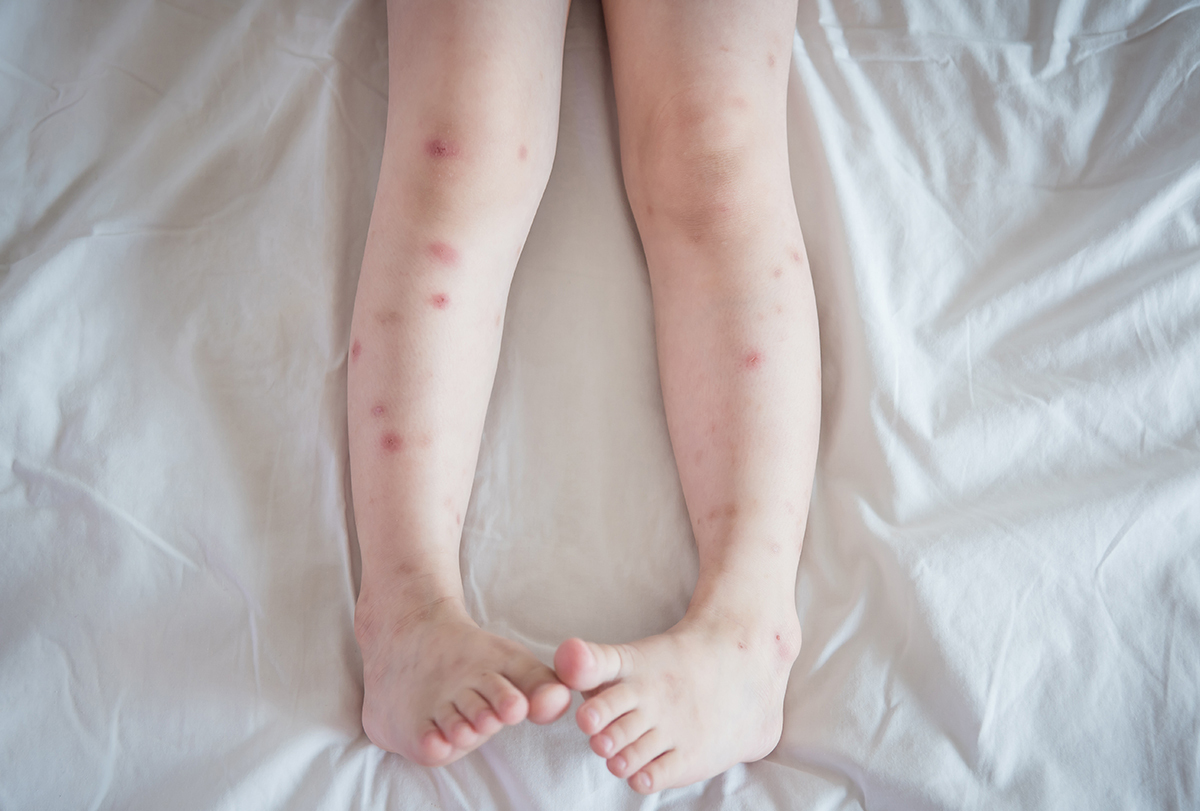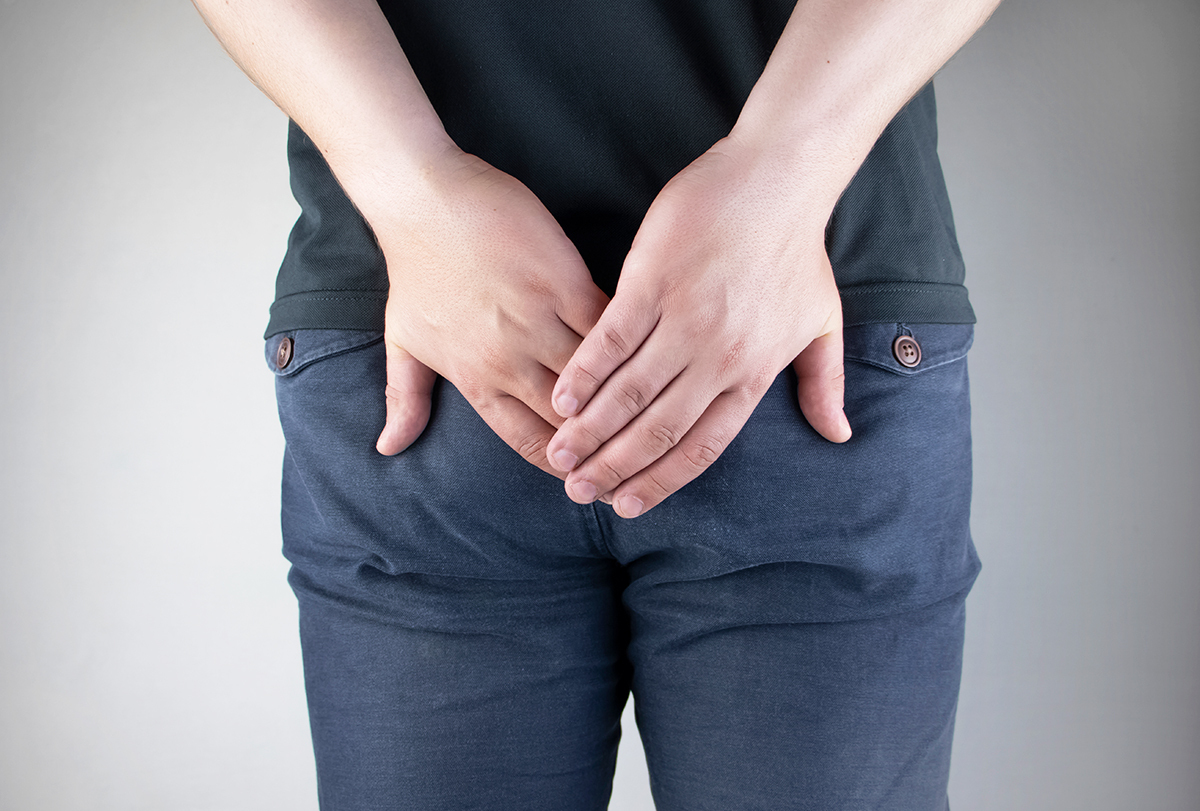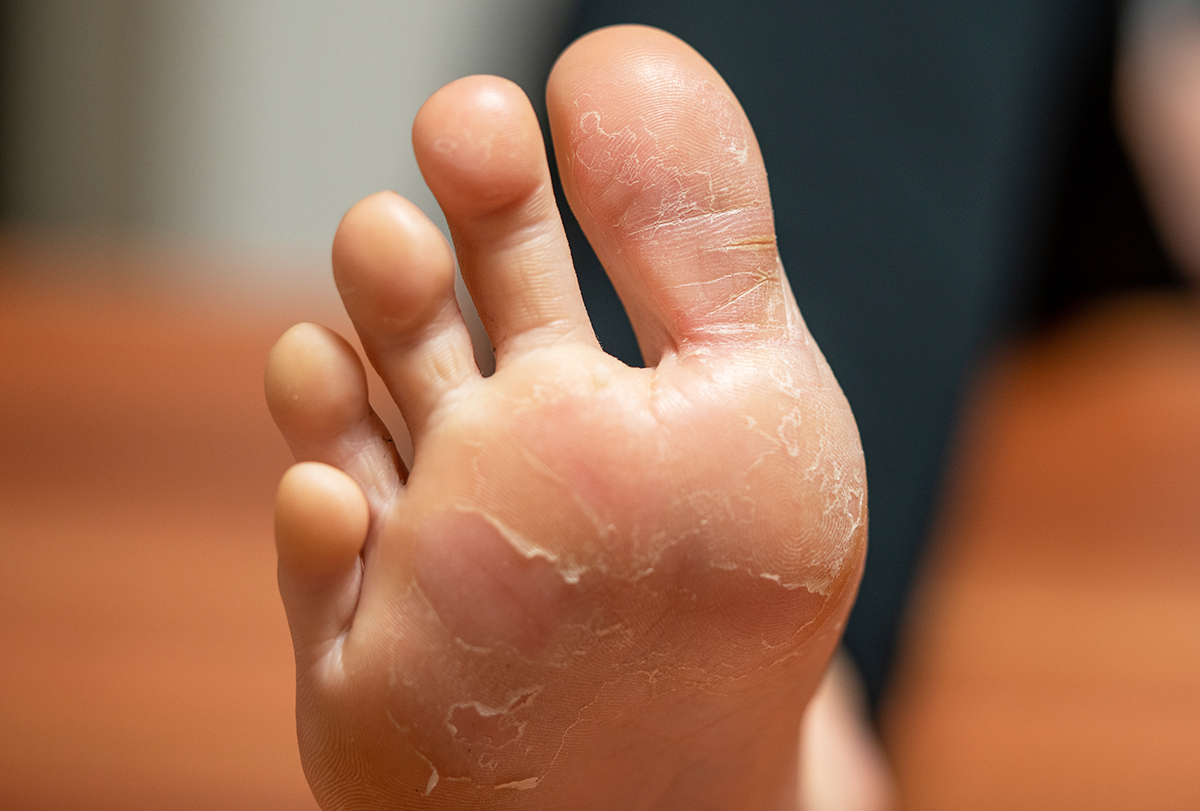
In this article:
The soles of the feet tend to be drier and rougher than the rest of the body. This is mainly because there are no oil glands at the base of the feet to keep the skin naturally lubricated.
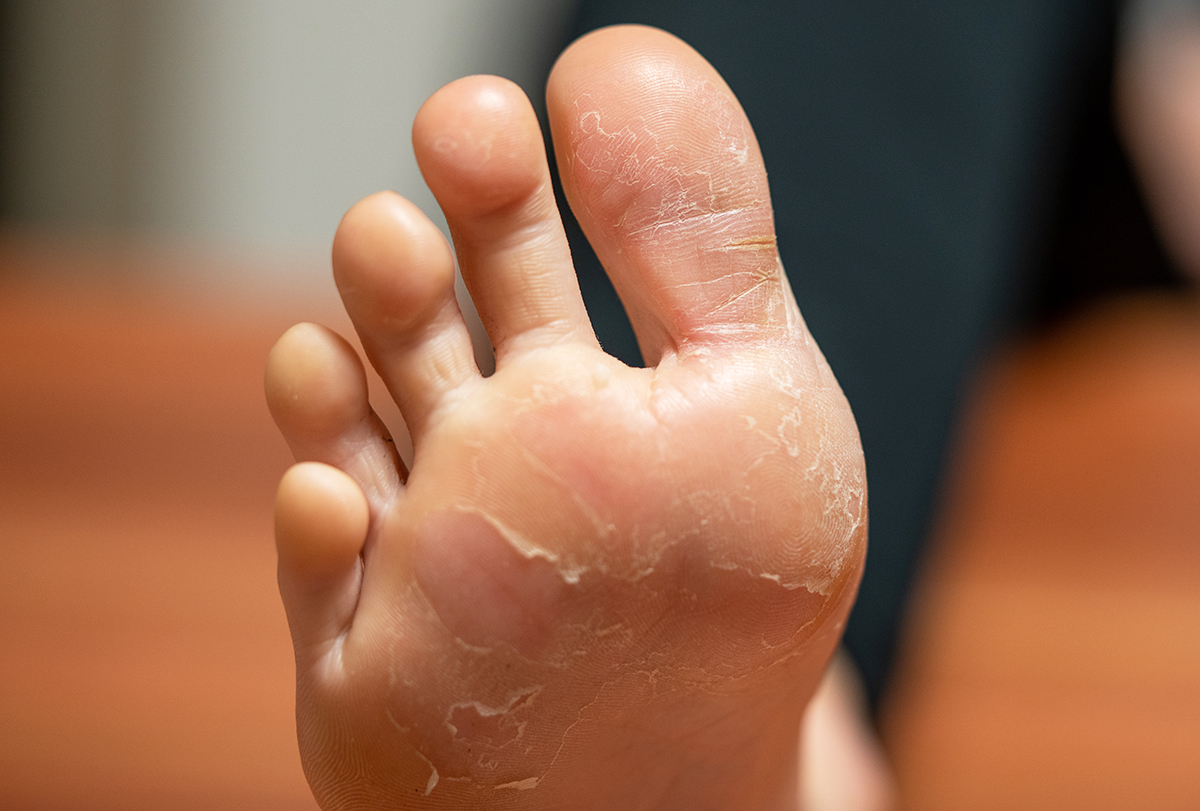
Plus, the feet carry the weight of the body and rub against various hard surfaces while moving about. Thus, the skin in this area undergoes a lot of wear and tear on account of this constant strain and friction, making it thick, hard, and damaged.
Fortunately, the skin is a self-regenerating organ that gradually sheds the damaged top layer to allow newly formed skin to rise to the surface. (1) However, certain conditions and factors such as excessive dryness can make the outer skin shed faster in the form of visible peeling. (2)
In most cases, it is not really a major health concern but can be quite discomforting as it leads to itchiness and general irritation.
Plus, the peeling skin can make your feet look ugly and unkempt. The good thing is that some simple home interventions and foot care can go a long way in addressing and avoiding peeling skin on the feet. (3)
Home Remedies to Treat Peeling Skin on Your Feet
Here are some simple measures to address this problem at home:
1. Exfoliate your feet
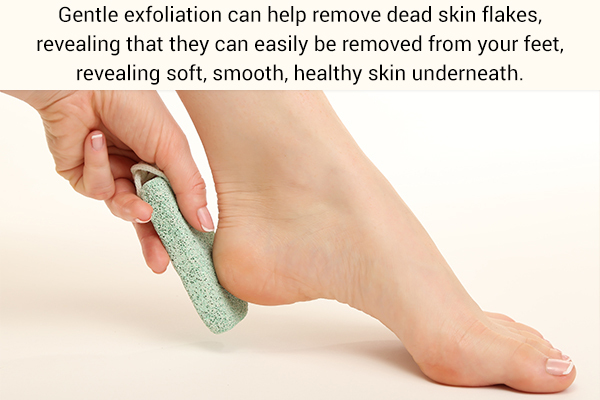
When the skin starts to peel, it takes several days for the upper layer to come off completely. Gentle exfoliation can help accelerate this process. It loosens the dead skin flakes so that they can easily be removed from your feet, revealing soft, smooth, healthy skin underneath.
What to do:
- Use a pumice stone or an OTC foot scrub to gently exfoliate the soles of your feet. The best time to do this is after a warm shower, bath, or Epsom-salt foot soak as it will soften the hard dead skin, making it easier to scrub off.
- Moisturize your feet thereafter.
Note: Exfoliation is not recommended if your skin has sores or open wounds.
2. Use foot peel masks
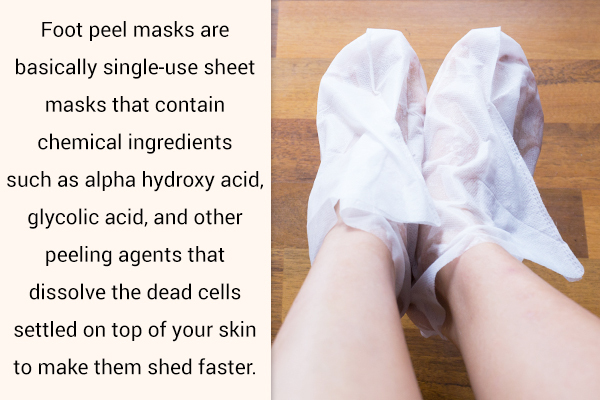
Foot peel masks are basically single-use sheet masks that contain chemical ingredients such as alpha hydroxy acid, glycolic acid, and other peeling agents that dissolve the dead cells settled on top of your skin to make them shed faster.
What to do:
Apply the mask on your feet for an hour and then throw it away. In a week or so, the dry, damaged outer layer of the skin will start to peel off in large patches and will be replaced with new baby-soft healthy skin. (4)
3. Keep your feet properly moisturized
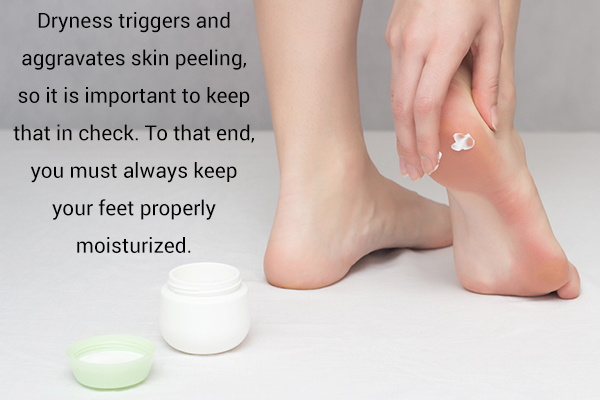
Dryness triggers and aggravates skin peeling, so it is important to keep that in check. To that end, you must always keep your feet properly moisturized.
What to do:
- Given that the skin on your feet tends to be extra dry and hard, using a deeply hydrating lubricant such as petroleum jelly is recommended. This waxy ointment not only hydrates the skin but also forms a thick protective layer over it to keep out irritants and prevent further irritation or damage. Applying it when the skin is still damp will lock in the moisture for long-lasting effects. (5)(6)
- You can also get special cotton socks that come with a hydrating gel lining inside to keep your feet moisturized and comfortable while also protecting them from external damage. They are also called moisturizing foot socks, heel socks, or heel sleeves. Put them on for a few hours during the day or overnight.
4. Try an oatmeal foot mask
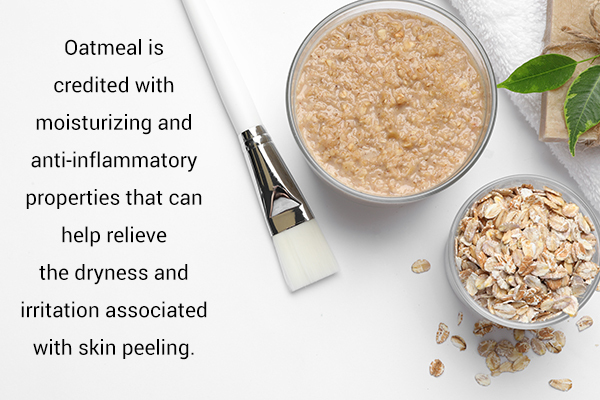
Oatmeal is credited with moisturizing and anti-inflammatory properties that can help relieve the dryness and irritation associated with skin peeling. It is especially recommended if your peeling skin is the result of an inflammatory condition such as eczema.
Plus, colloidal oatmeal has a granular texture, which makes it a gentle scrub for your feet.
What to do:
- Mix ⅓ cup of ground oatmeal with ½ cup of warm water to make a paste.
- Apply the mixture to the affected skin.
- Cover your feet with plastic wrap for about 30–40 minutes.
5. Apply aloe vera gel
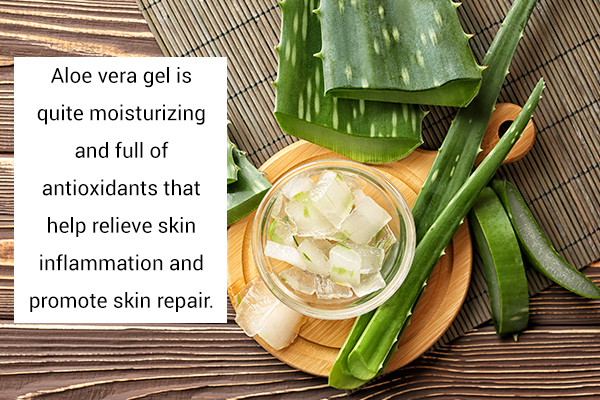
Aloe vera gel is quite moisturizing and full of antioxidants that help relieve skin inflammation and promote skin repair. Thus, this single ingredient can help relieve skin dryness and also minimize the redness, itching, and irritation associated with skin peeling.
What to do:
- Refrigerate a fresh aloe vera leaf for a few hours.
- Cut its tip to squeeze out the gel.
- Massage the aloe vera gel gently into the affected area. (3)
Causes of Peeling Feet
The skin on the bottom of your feet may start to peel due to the following reasons:
- Hand-foot syndrome (erythrodysesthesia) is a rare side effect of some cancer treatments wherein traces of chemo medication seep out of the small blood vessels into the surrounding tissue, causing an inflammatory reaction that makes the overlying skin turn red, swollen, tingly, and flaky. As the name suggests, this condition is localized to the hands and feet. (7)
- Acral peeling skin syndrome is an uncommon genetic condition characterized by exaggerated but painless peeling of the skin covering the hands and feet. (8)(9)
- Athlete’s foot is a common fungal infection, and skin peeling is one of its symptoms. (10)
- Severe skin dryness or xerosis due to sun damage, arid weather, friction, and excessive use of chemical-based soaps (11) and other skin products, among other factors, can make the skin peel.
- Swimming in highly chlorinated pools, excessive sun exposure, use of indoor heating, long or frequent hot showers, and using harsh skin and bathing products can strip the natural moisture from the skin, leaving it utterly dry and therefore more prone to peeling. (12)
Symptoms of Peeling Feet
Peeling skin on the feet can be accompanied by the following symptoms:
- Cracks in the heel
- Scaling of the skin
- Redness
- Blister formation
- Itching and burning sensation (13)
Preventative Measures Against Peeling Feet
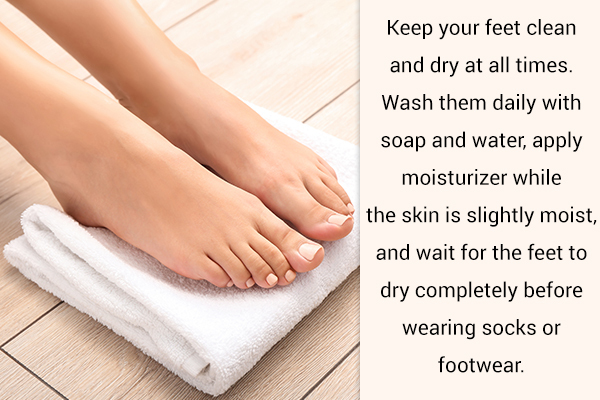
Here are some dos and don’ts to keep the skin on your feet from peeling:
- Don’t walk barefoot on the damp floors of public areas, such as community swimming pools, gyms, and hotel rooms, as these are breeding grounds for germs that can infect your feet. The fungus that is responsible for athlete’s foot infection grows in such warm and humid settings.
- Keep your feet clean and dry at all times. Wash them daily with soap and water, apply moisturizer while the skin is slightly moist, and wait for the feet to dry completely before wearing socks or footwear. (14)
- Apply a little Vaseline jelly between your toes to prevent them from rubbing against one another. (15)
- Don’t apply corticosteroids or systemic retinoids (vitamin A derivatives) to the peeling skin, unless advised by your doctor. Both these ointments can exacerbate the problem and cause serious side effects or adverse skin reactions. (6)
When to See a Doctor
Seek medical consultation in the following cases:
- If the above-mentioned measures don’t provide adequate relief
- If you have a severe sunburn
- If the problem keeps coming back or getting worse
- If you develop other unusual symptoms, especially pus discharge, fever, severe swelling, and redness, all of which may indicate an infection



